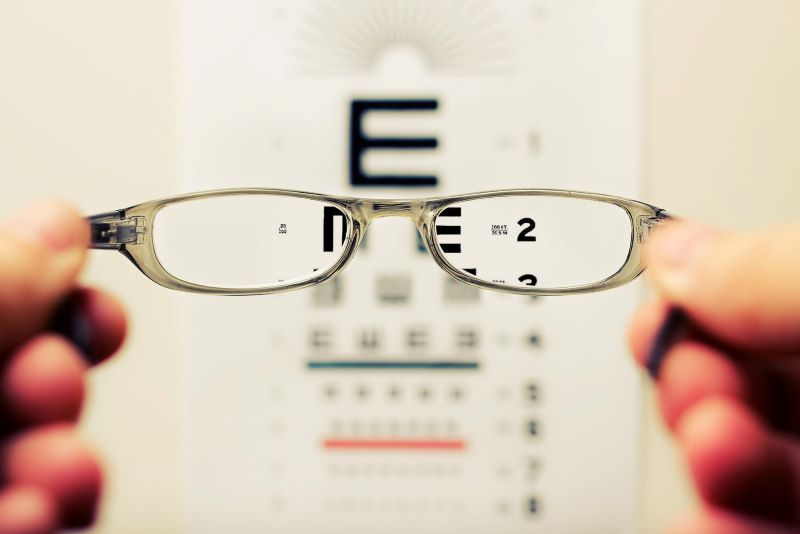If you are a commercial bus or truck driver or in another driving job with high safety demands, you may need to pass a Department of Transportation (DOT) physical. You will need to see a certified medical examiner to examine and issue a certificate for you. While most people are able to drive despite minor health conditions, if you have any of the pre-existing health conditions on the list below, they might disqualify you from being able to perform your job safely.
1. Hearing or Vision Loss
You need to be mindful of your surroundings while driving, which means you need to be able to respond to auditory and visual cues. Failure to pass the vision or hearing component is an automatic disqualifying event.
You will need to demonstrate a minimum of 20/40 vision in each eye separately and together. You can do this with or without the aid of correction through glasses or contacts. You will also need to have good peripheral vision and be able to differentiate between green, amber or yellow, and red, the standard traffic light colors.
If you only meet this standard in one eye, you may still qualify under the Alternative Vision Standard. To do so, you will need a vision specialist to fill out the Vision Evaluation Report (MCSA-5871). You will also need to have another DOT physical and pass a driving test to be certified for one year.
For your hearing, the examiner will give you a forced whisper test. You must hear a forced whisper with at least one ear from five feet away. If you are able to do so, with or without hearing aids, your examiner will clear you. If you do not pass the whisper test, you can take an audiometry test, passing will allow you to be certified. If you are unable to pass the audiometry test, speak to your medical examiner about the possibility of becoming certified with a hearing exemption.
If you need glasses, contacts, or hearing aids to fulfill these requirements, you must always wear them while driving.
2. Use of Marijuana or Other State-Altering Substances
Marijuana, including CBD, hemp, or cannabis-derived products, can disqualify you even if the product is recommended or prescribed by a licensed medical practitioner. The Drug Enforcement Agency (DEA) banned all schedule I substances such as ecstasy or MDMA, heroin, LSD, mescaline, mushrooms, Quaaludes, MDPV, and marijuana.
3. Specific Heart Conditions
Heart conditions will disqualify you until they resolve or your cardiologist clears you. For example, angina (or chest pain) will not disqualify you if it’s stable or you routinely take nitroglycerine to control it. Other heart conditions that could exclude you are:
- Myocardial Infarction: if you experience a heart attack, you must take at least two months off and recertify with a medical professional before returning to your job
- Coronary Insufficiency: reduced blood flow through one or multiple coronary arteries
- Unstable Angina Pectoris: chest pain or discomfort due to heart disease without activity or exertion
- Thrombosis Risk: if you have a current risk of blood clots, driving puts you at an increased risk for a heart attack or stroke
Heart conditions should be evaluated by a cardiologist and reported during your DOT physical to ensure it is safe for you to drive.
4. Inner Ear Diseases
These disorders can cause vertigo, a feeling of spinning and dizziness or balance issues. Fatigue, working long hours, smoking, and too much salt in your diet can trigger these symptoms. A classic example is Meniere’s disease. Your inner ear is highly sensitive, and everyday aspects of driving can set off these diseases. Your condition jeopardizes your ability to drive correctly and safely. Unfortunately, the medications used to treat these diseases have sedative effects, which will also disqualify you.
However, if you can demonstrate being symptom-free for a specified period, you may be able to recertify in the future.
5. Conditions Causing Loss of Consciousness
Epilepsy or other seizure disorders fall into this category. Like inner ear diseases, they are unpredictable and driving can trigger them. You can lose consciousness and control of the vehicle you are operating at any time. If you can demonstrate your seizures are under control, you may be eligible to apply for an FMCSA exemption.
6. Respiratory Conditions Requiring Oxygen Equipment
Respiratory conditions such as asthma, bronchitis, emphysema, or sleep apnea are left up to the medical examiner’s discretion. However, they will typically send you for additional tests with a pulmonary specialist before clearing you.
If you have been diagnosed with sleep apnea, you must be able to show that you are compliant with treatment. This is because driving drowsy can be as dangerous as driving under the influence. The National Safety Council research explains that a fatigued driver is three times more likely to be involved in a crash.
If you require oxygen treatment with the use of an oxygen tank for any reason while driving, the DOT will automatically disqualify you due to the risk of your oxygen equipment malfunctioning or exploding.
7. Uncontrolled Diabetes
If you have insulin-dependent diabetes, you don’t have to apply for a medical exemption. However, you will need to visit your treating provider within 45 days of your DOT physical. Be prepared to show three months of your electronic glucose logs at this appointment and have your physician complete the Insulin-Treated Diabetes Mellitus Assessment Form MCSA-5870. You will turn in this form to the DOT medical examiner. If you haven’t completed all of this information, you can be certified for three months while you gather this data. It is up to the examiner’s discretion, and if everything is in order, you will be approved on an annual basis.
8. Hypertension
For most individuals, a blood pressure reading at or below 120/80 is healthy. A reading up to 129/79 is elevated or pre-hypertensive, may be concerning to your DOT certified examiner, but it will not cause a problem during your exam. You may still be certified for two years. If your blood pressure is above this range, you have type 1, 2, or 3 hypertension. Each stage has its own restrictions and conditions that must be met for you to remain a DOT certified driver.
- Stage 1 – A blood pressure reading of 140-159 over 90-99 indicates stage 1 hypertension. If you fall in this category, you may still receive a one year certification but must certify yearly.
- Stage 2 – If your blood pressure falls in the range of 160-179 over 100-109, you have stage 2 hypertension. You may be granted a one time three month certification, but you must get your blood pressure down below 140/90 to be certified for the remainder of the year. You will also need to recertify annually.
- Stage 3 – Blood pressure that is 180/110 or above is a disqualifying condition. You cannot be certified until you can get your blood pressure down under 140/90. Once your blood pressure is down and stable, you may be certified to drive every six months.
If you are newly diagnosed with diabetes or hypertension, you will have to get it under control with diet, exercise, and medications before re-certifying. Visit with your primary care physician to develop a plan to reduce your blood pressure.
If you have any concerns or if something comes up during your physical exam, speak honestly with the examiner. They are doing their best to clear you to continue doing your job. Driving is a huge responsibility in a unique working environment that requires some extra clearance. The DOT examiner and you should be concerned about your health, safety, and keeping everyone safe on the road around you.
Infographic
Passing the DOT physical exam requires working or getting your commercial driver’s license. The test safeguards that drivers are medically fit and qualified for their job in a secure, efficient manner. Though unfortunately, certain medical ailments could prevent you from passing it successfully. This infographic will provide insight into which conditions can impede success on the DOT physical exam.







